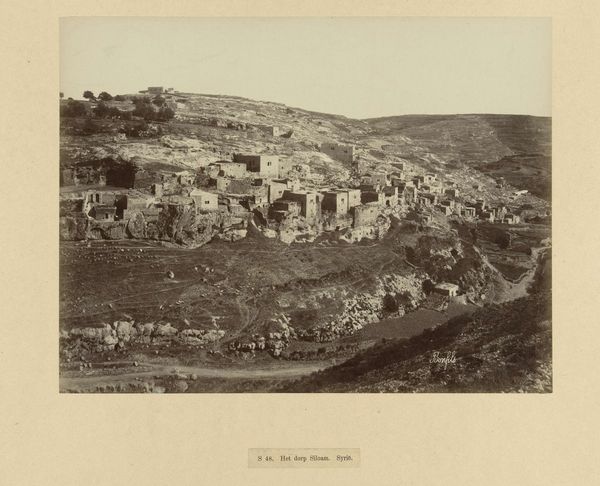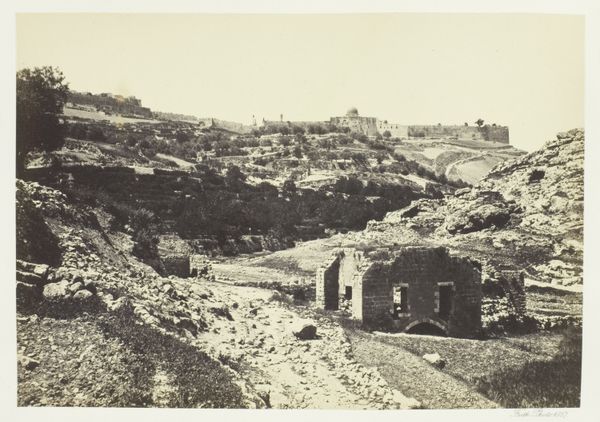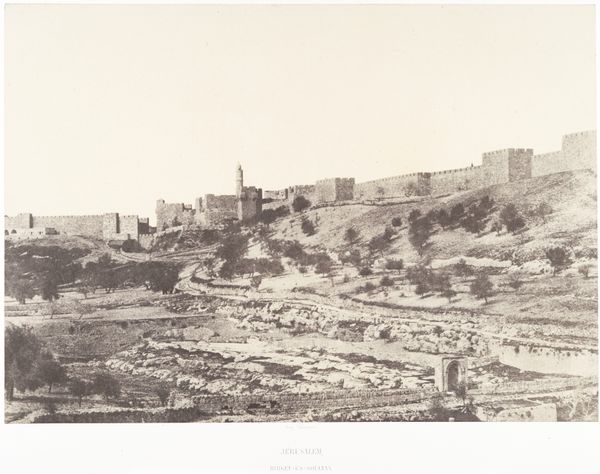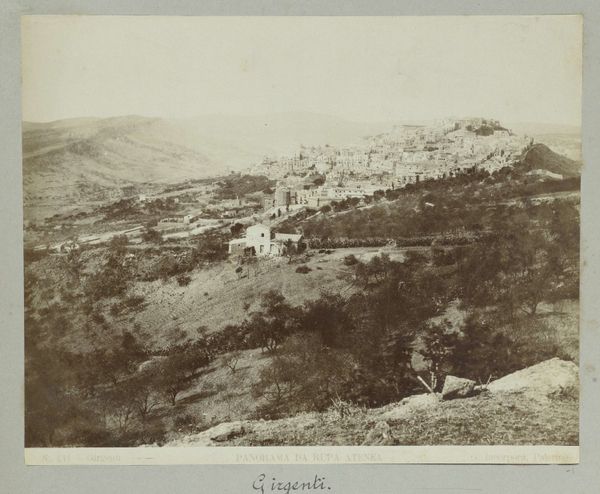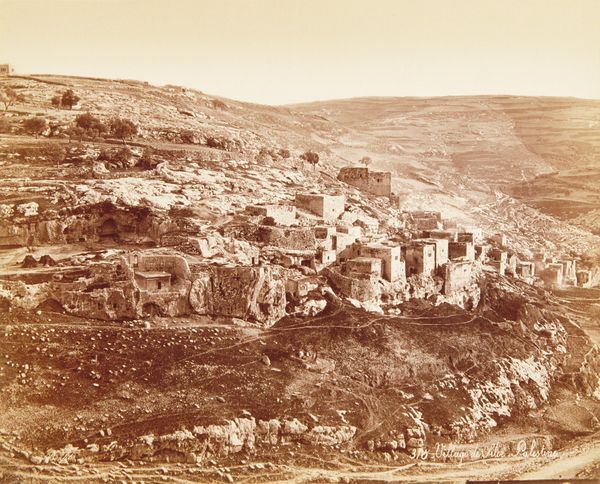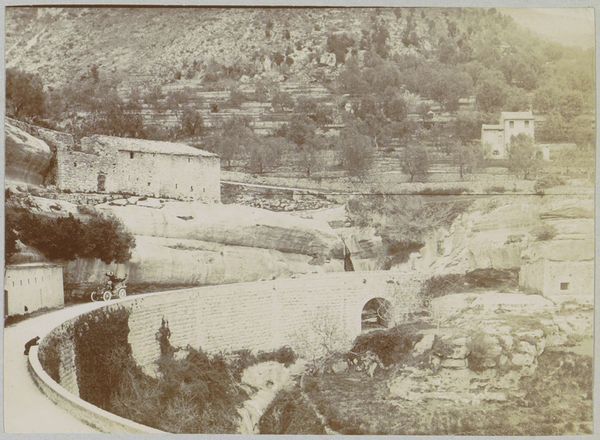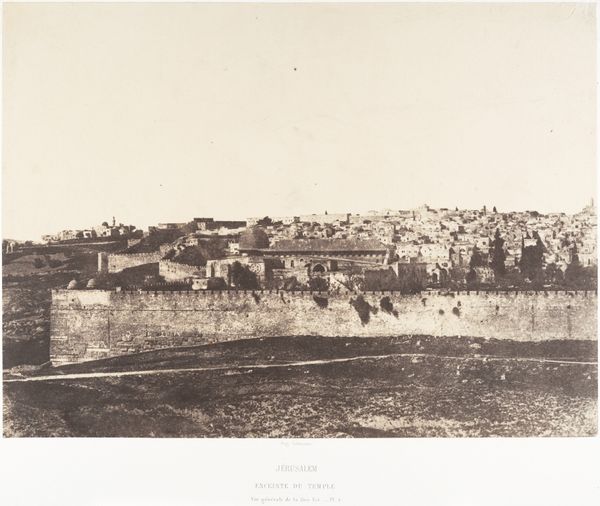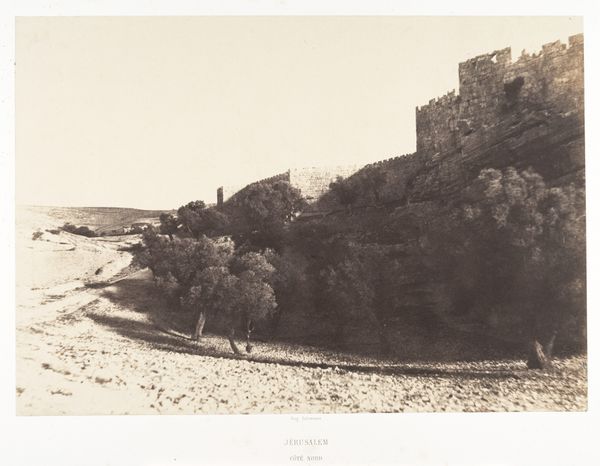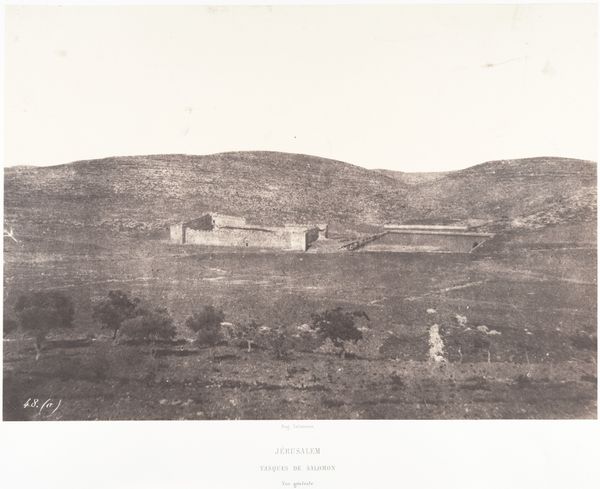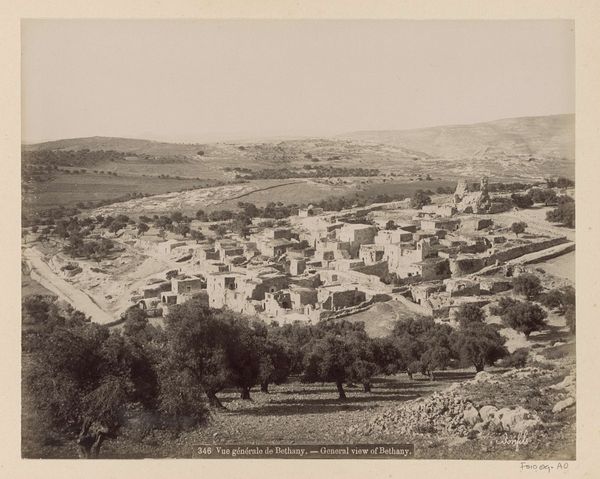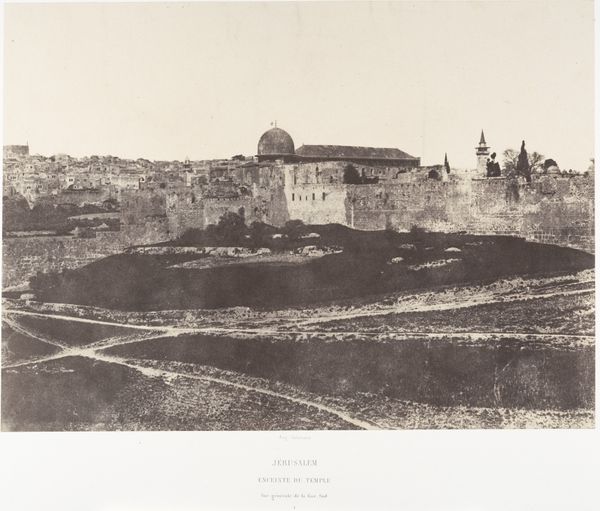
Jérusalem, Mosquée d'Omar, côté Est, Intérieur de l'enceinte, 2 1854 - 1859
0:00
0:00
daguerreotype, photography
#
landscape
#
daguerreotype
#
photography
#
cityscape
#
islamic-art
Dimensions: Image: 22.6 x 33 cm (8 7/8 x 13 in.) Mount: 44.8 x 60.2 cm (17 5/8 x 23 11/16 in.)
Copyright: Public Domain
Editor: This is Auguste Salzmann's "Jérusalem, Mosquée d'Omar, côté Est, Intérieur de l'enceinte, 2," a daguerreotype from the 1850s depicting a section of the Temple Mount. The buildings have a solid, enduring quality and the tones give the photograph an otherworldly feeling. What stands out to you? Curator: I see this image as more than just a document of Jerusalem's architecture; it's a political statement rendered in light and silver. Consider the context: Salzmann, commissioned to provide photographic evidence supporting French claims of Christian antiquity in the Holy Land, focused instead on Islamic architecture. How might his choices challenge the colonial narrative that sought to erase or diminish the Islamic presence in Jerusalem? Editor: That's a fascinating angle! I hadn't considered the choice of subject as a political act in itself. Is he suggesting that Islamic history is just as valid or important? Curator: Precisely. Salzmann’s gaze is not just on the stones of the mosque but on the power dynamics at play. The photograph becomes a subtle act of resistance, highlighting a culture often marginalized or misrepresented by Western colonial powers. How does the composition—the framing, the light—contribute to this effect? Editor: The even lighting almost seems to grant equal importance to all the structures within the frame. It doesn’t highlight one building over another. Curator: Exactly! By presenting the scene in this way, he resists the urge to create a visual hierarchy that privileges one religious narrative over another. What have you learned from looking at this photograph today? Editor: That even in the 19th century, the photographer had an agency to shape perceptions and that photography wasn't a neutral, objective technology. What about you? Curator: That the critical analysis of historical context provides invaluable insight into what and how we see. These old photos contain complexities we're still unpacking!
Comments
No comments
Be the first to comment and join the conversation on the ultimate creative platform.


